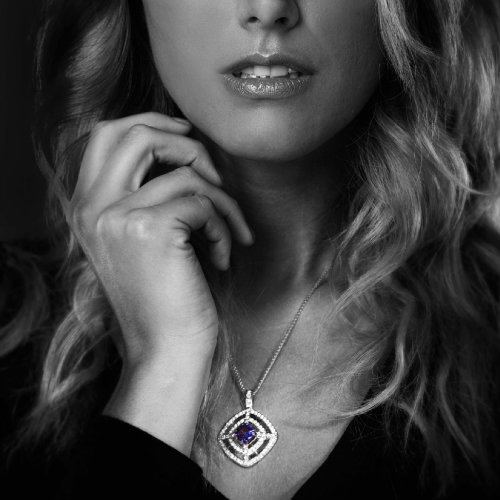Inspiration for my fine gemstone jewelry designs can come from anywhere. You name it, anything in my surroundings or life experiences can ignite that creative spark: a gemstone, travel, architecture, science, nature, shapes, colors and so forth. I never know what will get the creative juices flowing. In the case of one particular pendant, it all began with an early morning walk and ended with a finished piece of jewelry art.
Jewelry Inspired By Nature
One morning during a simple walk through a flower garden, I noticed a dew covered spider web entwined among some of the flowers, similar to this:
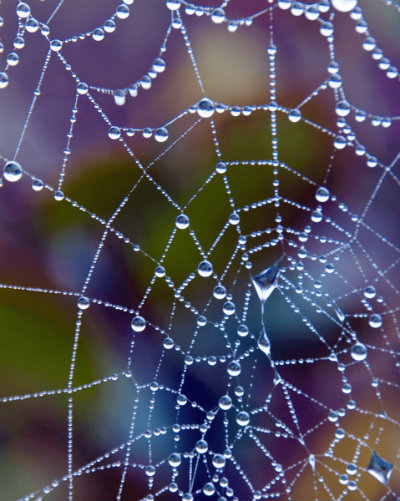
The sun, sparkling like diamonds through the dew drops and painted upon a background canvas of swirling blues, purples and greens of the flowers, froze me for a few seconds. This mental image was filed away until I was on a gemstone buying trip a few months later. One of the stones my supplier presented was a lovely square cushion cut tanzanite gemstone. The shape, combined with the deep, rich blue and violet colors, immediately brought back my memory of the spider web in the flower garden. I had to buy the stone. Then began the real work of transforming my mental image into a physical design. I chose a pendant because tanzanite is not an ideal choice for rings or bracelets which are susceptible to knocks and bangs. I prefer to use tanzanite in earrings and necklaces/pendants. Besides, what better place to show off such a piece of art than around a woman’s neck?
This Gemologist's Approach to Jewelry Design
Some designers transform their ideas into a picture through freehand sketching. I’ve seen Remy Rotenier sketch live at an American Gem Trade Association seminar and Cynthia Bach’s sketches on her Instagram feed. Their work is amazing; in my opinion, suitable for framing! I envy their abilities. Considering my engineering background, though, I’m most comfortable relying on my drafting skills. As displayed below, I took more of an engineering approach to tell the story of my inspiration.
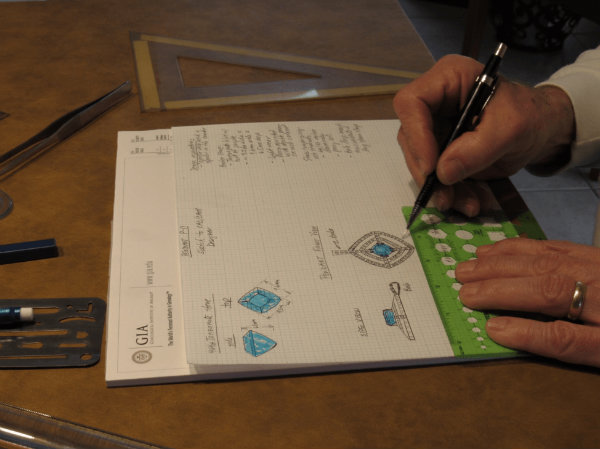
The next challenge in the process was to turn this conceptual picture into a physical piece of jewelry art. The completed drawing, specifications and gemstones were sent to one of the custom jewelry manufacturers I use. These highly skilled craftsmen not only made the finished jewelry pieces, but also performed the Computer Aided Design (CAD) work needed to convert my drawing into documents they used on their factory floor. Once I approved the CAD drawings, the jewelry maker turned them over to their goldsmiths to cast the precious metal pieces; in this case 18 kt white gold. Once the metal components were cast, polished and assembled and all the gemstones were set by the jewelry makers, I thoroughly inspected the finished pendant. This was the final test to make sure it not only looked good, but met all my design criteria. This picture shows me comparing the finished piece against the original sketch and the CAD drawing.
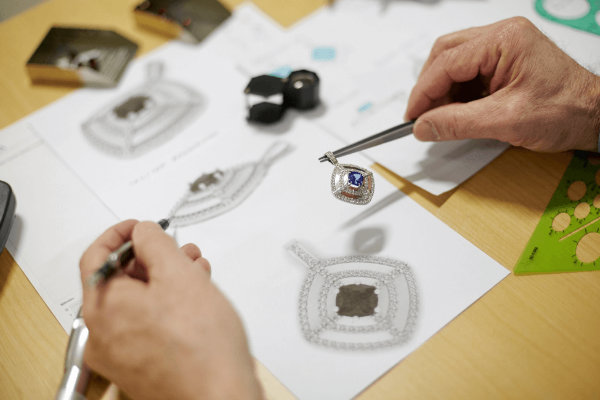
Something unusual occurred while making this pendant. My original design called for the space between the diamond encrusted ‘threads’ of the ‘web’ to be open; no metal. The goldsmiths misread my note and filled the space with highly polished white gold sections. While I could have had the manufacturer re-make the piece according to the original design, in this instance, I decided I liked the look with the spaces filled in and elected to keep it as is. Here it is:
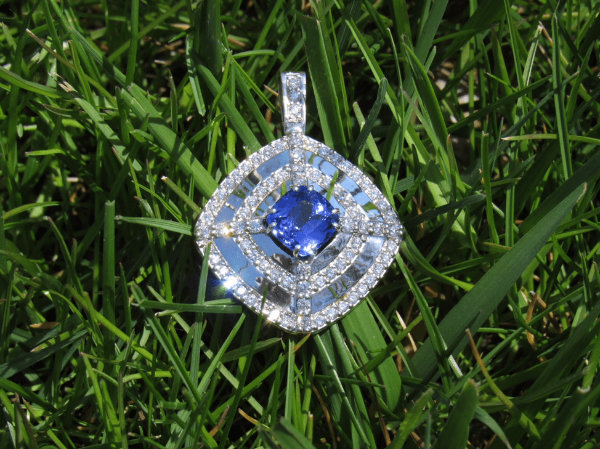
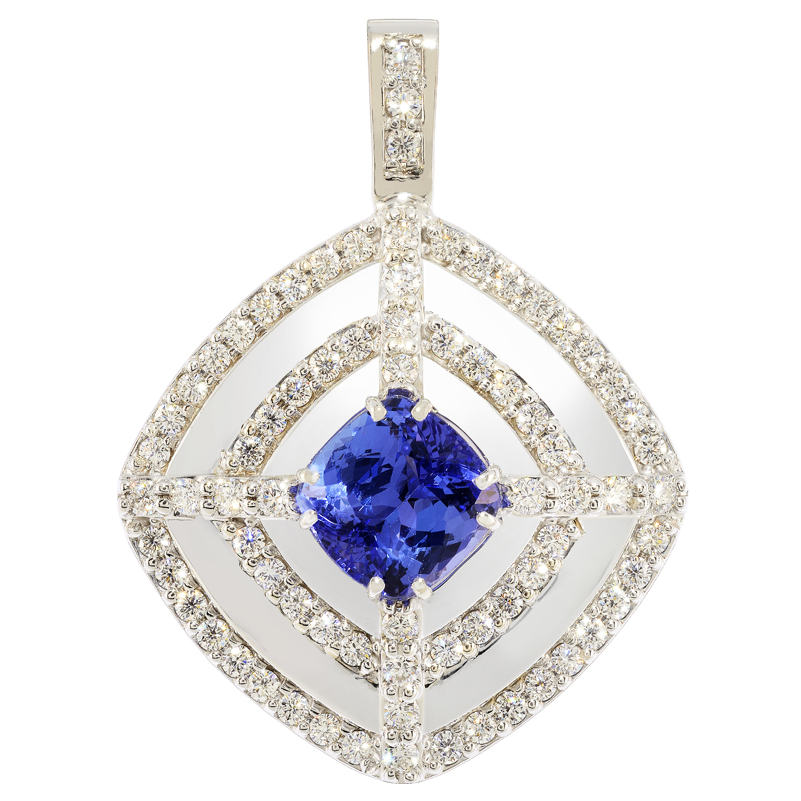
And here’s how it looks when worn.
